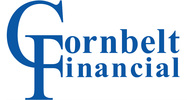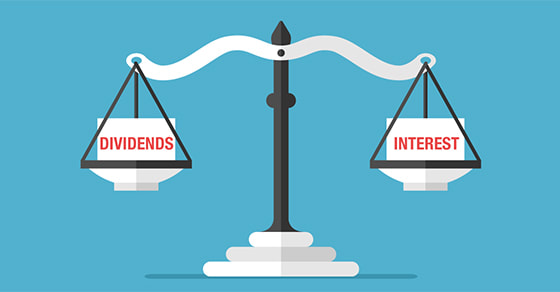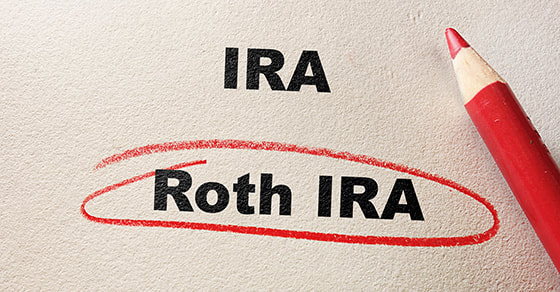Small business owners: A SEP may give you one last 2017 tax and retirement saving opportunity2/22/2018 Are you a high-income small-business owner who doesn’t currently have a tax-advantaged retirement plan set up for yourself? A Simplified Employee Pension (SEP) may be just what you need, and now may be a great time to establish one. A SEP has high contribution limits and is simple to set up. Best of all, there’s still time to establish a SEP for 2017 and make contributions to it that you can deduct on your 2017 income tax return.
2018 deadlines for 2017 A SEP can be set up as late as the due date (including extensions) of your income tax return for the tax year for which the SEP is to first apply. That means you can establish a SEP for 2017 in 2018 as long as you do it before your 2017 return filing deadline. You have until the same deadline to make 2017 contributions and still claim a potentially hefty deduction on your 2017 return. Generally, other types of retirement plans would have to have been established by December 31, 2017, in order for 2017 contributions to be made (though many of these plans do allow 2017 contributions to be made in 2018). High contribution limits Contributions to SEPs are discretionary. You can decide how much to contribute each year. But be aware that, if your business has employees other than yourself: 1) Contributions must be made for all eligible employees using the same percentage of compensation as for yourself, and 2) employee accounts are immediately 100% vested. The contributions go into SEP-IRAs established for each eligible employee. For 2017, the maximum contribution that can be made to a SEP-IRA is 25% of compensation (or 20% of self-employed income net of the self-employment tax deduction) of up to $270,000, subject to a contribution cap of $54,000. (The 2018 limits are $275,000 and $55,000, respectively.) Simple to set up A SEP is established by completing and signing the very simple Form 5305-SEP (“Simplified Employee Pension — Individual Retirement Accounts Contribution Agreement”). Form 5305-SEP is not filed with the IRS, but it should be maintained as part of the business’s permanent tax records. A copy of Form 5305-SEP must be given to each employee covered by the SEP, along with a disclosure statement. Additional rules and limits do apply to SEPs, but they’re generally much less onerous than those for other retirement plans. Contact us to learn more about SEPs and how they might reduce your tax bill for 2017 and beyond. © 2018
0 Comments
Tax credits reduce tax liability dollar-for-dollar, potentially making them more valuable than deductions, which reduce only the amount of income subject to tax. Maximizing available credits is especially important now that the Tax Cuts and Jobs Act has reduced or eliminated some tax breaks for businesses. Two still-available tax credits are especially for small businesses that provide certain employee benefits.
1. Credit for paying health care coverage premiums The Affordable Care Act (ACA) offers a credit to certain small employers that provide employees with health coverage. Despite various congressional attempts to repeal the ACA in 2017, nearly all of its provisions remain intact, including this potentially valuable tax credit. The maximum credit is 50% of group health coverage premiums paid by the employer, if it contributes at least 50% of the total premium or of a benchmark premium. For 2017, the full credit is available for employers with 10 or fewer full-time equivalent employees (FTEs) and average annual wages of $26,200 or less per employee. Partial credits are available on a sliding scale to businesses with fewer than 25 FTEs and average annual wages of less than $52,400. The credit can be claimed for only two years, and they must be consecutive. (Credits claimed before 2014 don’t count, however.) If you meet the eligibility requirements but have been waiting to claim the credit until a future year when you think it might provide more savings, claiming the credit for 2017 may be a good idea. Why? It’s possible the credit will go away in the future if lawmakers in Washington continue to try to repeal or replace the ACA. At this point, most likely any ACA repeal or replacement wouldn’t go into effect until 2019 (or possibly later). So if you claim the credit for 2017, you may also be able to claim it on your 2018 return next year (provided you again meet the eligibility requirements). That way, you could take full advantage of the credit while it’s available. 2. Credit for starting a retirement plan Small employers (generally those with 100 or fewer employees) that create a retirement plan may be eligible for a $500 credit per year for three years. The credit is limited to 50% of qualified start-up costs. Of course, you generally can deduct contributions you make to your employees’ accounts under the plan. And your employees enjoy the benefit of tax-advantaged retirement saving. If you didn’t create a retirement plan in 2017, you might still have time to do so. Simplified Employee Pensions (SEPs) can be set up as late as the due date of your tax return, including extensions. If you’d like to set up a different type of plan, consider doing so for 2018 so you can potentially take advantage of the retirement plan credit (and other tax benefits) when you file your 2018 return next year. Determining eligibility Keep in mind that additional rules and limits apply to these tax credits. We’d be happy to help you determine whether you’re eligible for these or other credits on your 2017 return and also plan for credits you might be able to claim on your 2018 return if you take appropriate actions this year. © 2018 Business owners may not be able to set aside as much as they’d like in tax-advantaged retirement plans. Typically, they’re older and more highly compensated than their employees, but restrictions on contributions to 401(k) and profit-sharing plans can hamper retirement-planning efforts. One solution may be a cash balance plan.
Defined benefit plan with a twist The two most popular qualified retirement plans — 401(k) and profit-sharing plans — are defined contribution plans. These plans specify the amount that goes into an employee’s retirement account today, typically a percentage of compensation or a specific dollar amount. In contrast, a cash balance plan is a defined benefit plan, which specifies the amount a participant will receive in retirement. But unlike traditional defined benefit plans, such as pensions, cash balance plans express those benefits in the form of a 401(k)-style account balance, rather than a formula tied to years of service and salary history. The plan allocates annual “pay credits” and “interest credits” to hypothetical employee accounts. This allows participants to earn benefits more uniformly over their careers, and provides a clearer picture of benefits than a traditional pension plan. Greater savings for owners A cash balance plan offers significant advantages for business owners — particularly those who are behind on their retirement saving and whose employees are younger and lower-paid. In 2017, the IRS limits employer contributions and employee deferrals to defined contribution plans to $54,000 ($60,000 for employees age 50 or older). And nondiscrimination rules, which prevent a plan from unfairly favoring highly compensated employees (HCEs), can reduce an owner’s contributions even further. But cash balance plans aren’t bound by these limits. Instead, as defined benefit plans, they’re subject to a cap on annual benefit payouts in retirement (currently, $215,000), and the nondiscrimination rules require that only benefits for HCEs and non-HCEs be comparable. Contributions may be as high as necessary to fund those benefits. Therefore, a company may make sizable contributions on behalf of owner/employees approaching retirement (often as much as three or four times defined contribution limits), and relatively smaller contributions on behalf of younger, lower-paid employees. There are some potential risks. The most notable one is that, unlike with profit-sharing plans, you can’t reduce or suspend contributions during difficult years. So, before implementing a cash balance plan, it’s critical to ensure that your company’s cash flow will be steady enough to meet its funding obligations. Right for you? Although cash balance plans can be more expensive than defined contribution plans, they’re a great way to turbocharge your retirement savings. We can help you decide whether one might be right for you. © 2017 A tried-and-true tax-saving strategy for investors is to sell assets at a loss to offset gains that have been realized during the year. So if you’ve cashed in some big gains this year, consider looking for unrealized losses in your portfolio and selling those investments before year end to offset your gains. This can reduce your 2017 tax liability.
But what if you expect an investment that would produce a loss if sold now to not only recover but thrive in the future? Or perhaps you simply want to minimize the impact on your asset allocation. You might think you can simply sell the investment at a loss and then immediately buy it back. Not so fast: You need to beware of the wash sale rule. The rule up close The wash sale rule prevents you from taking a loss on a security if you buy a substantially identical security (or an option to buy such a security) within 30 days before or after you sell the security that created the loss. You can recognize the loss only when you sell the replacement security. Keep in mind that the rule applies even if you repurchase the security in a tax-advantaged retirement account, such as a traditional or Roth IRA. Achieving your goals Fortunately, there are ways to avoid the wash sale rule and still achieve your goals:
For more ideas on saving taxes on your investments, please contact us. © 2017 One important step to both reducing taxes and saving for retirement is to contribute to a tax-advantaged retirement plan. If your employer offers a 401(k) plan, contributing to that is likely your best first step. If you’re not already contributing the maximum allowed, consider increasing your contribution rate between now and year end. Because of tax-deferred compounding (tax-free in the case of Roth accounts), boosting contributions sooner rather than later can have a significant impact on the size of your nest egg at retirement. Traditional 401(k) A traditional 401(k) offers many benefits:
For 2017, you can contribute up to $18,000. So if your current contribution rate will leave you short of the limit, try to increase your contribution rate through the end of the year to get as close to that limit as you can afford. Keep in mind that your paycheck will be reduced by less than the dollar amount of the contribution, because the contributions are pre-tax so income tax isn’t withheld. If you’ll be age 50 or older by December 31, you can also make “catch-up” contributions (up to $6,000 for 2017). So if you didn’t contribute much when you were younger, this may allow you to partially make up for lost time. Even if you did make significant contributions before age 50, catch-up contributions can still be beneficial, allowing you to further leverage the power of tax-deferred compounding. Roth 401(k) Employers can include a Roth option in their 401(k) plans. If your plan offers this, you can designate some or all of your contribution as Roth contributions. While such contributions don’t reduce your current MAGI, qualified distributions will be tax-free. Roth 401(k) contributions may be especially beneficial for higher-income earners, because they don’t have the option to contribute to a Roth IRA. On the other hand, if you expect your tax rate to be lower in retirement, you may be better off sticking with traditional 401(k) contributions. Finally, keep in mind that any employer matches to Roth 401(k) contributions will be pretax and go into your traditional 401(k) account. How much and which type Have questions about how much to contribute or the best mix between traditional and Roth contributions? Contact us. We’d be pleased to discuss the tax and retirement-saving considerations with you. © 2017 Many investors, especially more risk-averse ones, hold much of their portfolios in “income investments” — those that pay interest or dividends, with less emphasis on growth in value. But all income investments aren’t alike when it comes to taxes. So it’s important to be aware of the different tax treatments when managing your income investments.
Varying tax treatment The tax treatment of investment income varies partly based on whether the income is in the form of dividends or interest. Qualified dividends are taxed at your favorable long-term capital gains tax rate (currently 0%, 15% or 20%, depending on your tax bracket) rather than at your ordinary-income tax rate (which might be as high as 39.6%). Interest income generally is taxed at ordinary-income rates. So stocks that pay dividends might be more attractive tax-wise than interest-paying income investments, such as CDs and bonds. But there are exceptions. For example, some dividends aren’t qualified and therefore are subject to ordinary-income rates, such as certain dividends from:
Also, the tax treatment of bond interest varies. For example:
One of many factors Keep in mind that tax reform legislation could affect the tax considerations for income investments. For example, if your ordinary rate goes down under tax reform, there could be less of a difference between the tax rate you’d pay on qualified vs. nonqualified dividends. While tax treatment shouldn’t drive investment decisions, it’s one factor to consider — especially when it comes to income investments. For help factoring taxes into your investment strategy, contact us. © 2017 Did you know that if you’re self-employed you may be able to set up a retirement plan that allows you to contribute much more than you can contribute to an IRA or even an employer-sponsored 401(k)? There’s still time to set up such a plan for 2017, and it generally isn’t hard to do. So whether you’re a “full-time” independent contractor or you’re employed but earn some self-employment income on the side, consider setting up one of the following types of retirement plans this year.
Profit-sharing plan This is a defined contribution plan that allows discretionary employer contributions and flexibility in plan design. (As a self-employed person, you’re both the employer and the employee.) You can make deductible 2017 contributions as late as the due date of your 2017 tax return, including extensions — provided your plan exists on Dec. 31, 2017. For 2017, the maximum contribution is 25% of your net earnings from self-employment, up to a $54,000 contribution. If you include a 401(k) arrangement in the plan, you might be able to contribute a higher percentage of your income. If you include such an arrangement and are age 50 or older, you may be able to contribute as much as $60,000. Simplified Employee Pension (SEP) This is a defined contribution plan that provides benefits similar to those of a profit-sharing plan. But you can establish a SEP in 2018 and still make deductible 2017 contributions as late as the due date of your 2017 income tax return, including extensions. In addition, a SEP is easy to administer. For 2017, the maximum SEP contribution is 25% of your net earnings from self-employment, up to a $54,000 contribution. Defined benefit plan This plan sets a future pension benefit and then actuarially calculates the contributions needed to attain that benefit. The maximum annual benefit for 2017 is generally $215,000 or 100% of average earned income for the highest three consecutive years, if less. Because it’s actuarial driven, the contribution needed to attain the projected future annual benefit may exceed the maximum contributions allowed by other plans, depending on your age and the desired benefit. You can make deductible 2017 defined benefit plan contributions until your return due date, provided your plan exists on Dec. 31, 2017. More to think about Additional rules and limits apply to these plans, and other types of plans are available. Also, keep in mind that things get more complicated — and more expensive — if you have employees. Why? Generally, they must be allowed to participate in the plan, provided they meet the qualification requirements. To learn more about retirement plans for the self-employed, contact us. © 2017 Converting a traditional IRA to a Roth IRA can provide tax-free growth and the ability to withdraw funds tax-free in retirement. But what if you convert a traditional IRA — subject to income taxes on all earnings and deductible contributions — and then discover that you would have been better off if you hadn’t converted it? Fortunately, it’s possible to undo a Roth IRA conversion, using a “recharacterization.”
Reasons to re-characterize There are several possible reasons to undo a Roth IRA conversion. For example:
Generally, when you convert to a Roth IRA, if you extend your tax return, you have until October 15 of the following year to undo it. (For 2016 returns, the extended deadline is October 16 because the 15th falls on a weekend in 2017.) In some cases it can make sense to undo a Roth IRA conversion and then redo it. If you want to redo the conversion, you must wait until the later of 1) the first day of the year following the year of the original conversion, or 2) the 31st day after the re-characterization. Keep in mind that, if you reversed a conversion because your IRA’s value declined, there’s a risk that your investments will bounce back during the waiting period. This could cause you to reconvert at ahigher tax cost. Re-characterization in action Nick had a traditional IRA with a balance of $100,000. In 2016, he converted it to a Roth IRA, which, combined with his other income for the year, put him in the 33% tax bracket. So normally he’d have owed $33,000 in federal income taxes on the conversion in April 2017. However, Nick extended his return and, by September 2017, the value of his account drops to $80,000. On October 1, Nick re-characterizes the account as a traditional IRA and files his return to exclude the $100,000 in income. On November 1, he reconverts the traditional IRA, whose value remains at $80,000, to a Roth IRA. He’ll report that amount on his 2017 tax return. This time, he’ll owe $26,400 — deferred for a year and resulting in a tax savings of $6,600. If the $20,000 difference in income keeps him in the 28% tax bracket or tax reform legislation is signed into law that reduces rates retroactively to January 1, 2017, he could save even more. If you convert a traditional IRA to a Roth IRA, monitor your financial situation. If the advantages of the conversion diminish, we can help you assess your options. © 2017 Your compensation may take several forms, including salary, fringe benefits and bonuses. If you work for a corporation, you might also receive stock-based compensation, such as stock options. These come in two varieties: nonqualified (NQSOs) and incentive (ISOs). With both NQSOs and ISOs, if the stock appreciates beyond your exercise price, you can buy shares at a price below what they’re trading for.
The tax consequences of these types of compensation can be complex. So smart tax planning is critical. Let’s take a closer look at the tax treatment of NQSOs, and how it differs from that of the perhaps better known ISOs. Compensation income NQSOs create compensation income — taxed at ordinary-income rates — on the “bargain element” (the difference between the stock’s fair market value and the exercise price) when exercised. This is regardless of whether the stock is held or sold immediately. ISOs, on the other hand, generally don’t create compensation income taxed at ordinary rates unless you sell the stock from the exercise without holding it for more than a year, in a “disqualified disposition.” If the stock from an ISO exercise is held more than one year, then generally your lower long-term capital gains tax rate applies when you sell the stock. Also, NQSO exercises don’t create an alternative minimum tax (AMT) preference item that can trigger AMT liability. ISO exercises can trigger AMT unless the stock is sold in a disqualified disposition (though it’s possible the AMT could be repealed under tax reform legislation). More tax consequences to consider When you exercise NQSOs, you may need to make estimated tax payments or increase withholding to fully cover the tax. Otherwise you might face underpayment penalties. Also keep in mind that an exercise could trigger or increase exposure to top tax rates, the additional 0.9% Medicare tax and the 3.8% net investment income tax (NIIT). These two taxes might be repealed or reduced as part of Affordable Care Act repeal and replace legislation or tax reform legislation, possibly retroactive to January 1 of this year. But that’s still uncertain. Have tax questions about NQSOs or other stock-based compensation? Let us know — we’d be happy to answer them. © 2017 The tax consequences of the sale of an investment, as well as your net return, can be affected by a variety of factors. You’re probably focused on factors such as how much you paid for the investment vs. how much you’re selling it for, whether you held the investment long-term (more than one year) and the tax rate that will apply. But there are additional details you should pay attention to. If you don’t, the tax consequences of a sale may be different from what you expect. Here are a few details to consider when selling an investment:
Which shares you’re selling. If you bought the same security at different times and prices and want to sell high-tax-basis shares to reduce gain or increase a loss to offset other gains, be sure to specifically identify which block of shares is being sold. Trade date vs. settlement date. When it gets close to year end, keep in mind that the trade date, not the settlement date, of publicly traded securities determines the year in which you recognize the gain or loss. Transaction costs. While transaction costs, such as broker fees, aren’t taxes, like taxes they can have a significant impact on your net returns, especially over time, because they also reduce the amount of money you have available to invest. If you have questions about the potential tax impact of an investment sale you’re considering, seek all of the details you should keep in mind to minimize it, or you are interested in learning how much you can save specifically, click here to receive your free tax analysis. © 2017 |
AuthorAdam Carr, MBA, EA Archives
June 2024
Categories
All
|











 RSS Feed
RSS Feed

